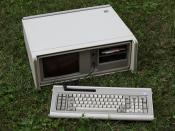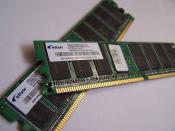In the first 45 years, numerous advances have been made in the subject of computer science. Not just numerous, but very notable as well. From the abacus to the laptop today, computers have sure come a long way.
First generation computers were usually called ENIAC. They used vacuum tubes. These types of computers became too hot to use for a long period of time. They were also very big. In 1959-1964, the second generation of computers came along. Unlike the first generation computers that used vacuum tubes to process information, these used transistors. This was a big improvement over the ENIAC computers. These could process a lot more information than the old ENIAC computers. A computer by IBM, called model 650, was faster and smaller, thanks to transistors instead of vacuum tubes. Next are the third generation computers. These have integrated circuits. These computers with integrated were cheaper, smaller in size, more reliable, and of course faster.
Fourth generation computers started in the 1970's. These have integrated circuits as well as microprocessors. The desktop PC most people use today are fourth generation.
Computers have many components. The most important is the microprocessor. It is like the brain of a computer. An engineer at the Intel Corporation was the first to design these types of chips. Since there was fast advances in technology, microprocessors were made affordable to many people. Some other parts inside a computer are a hard drive for memory, a CD-drive for reading CDs, and a floppy drive for reading floppy disks. There is also RAM, and ROM memory. RAM stands for random access memory, which is used for storage while the computer is being used. ROM stands for read only memory. In this memory is programs, which can't be written over. It can only be...



A decent essay
I think that this is a pretty decent essay. A slight bit dull and simply technical, but I think the author explained the "technojargon" rather well. Overall, I'd agree with the grade level (10th grade level). Good job!
1 out of 1 people found this comment useful.